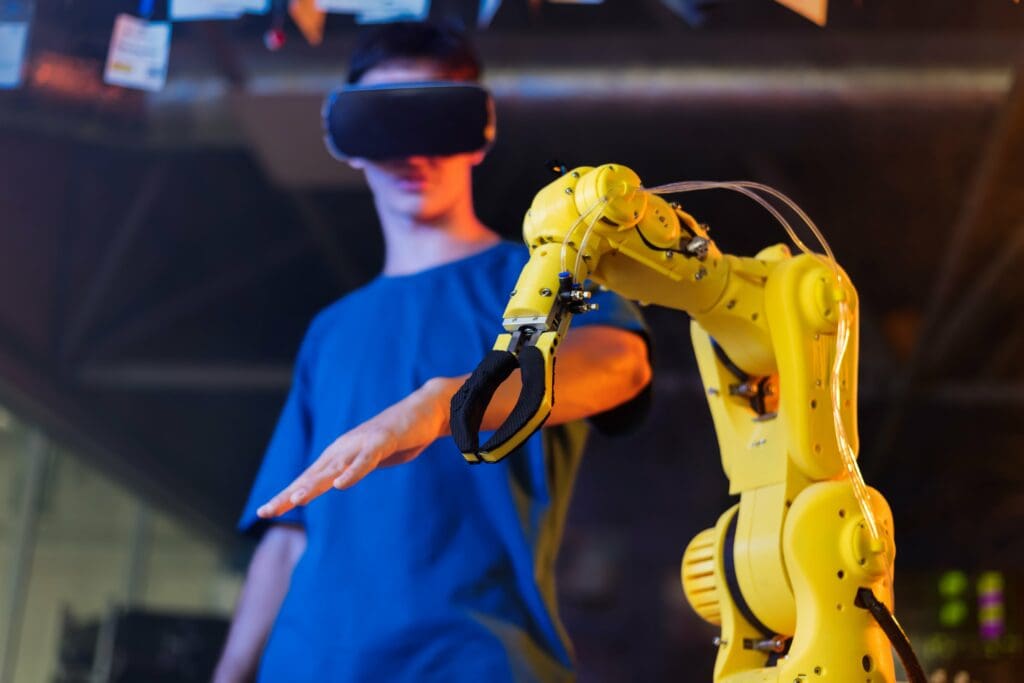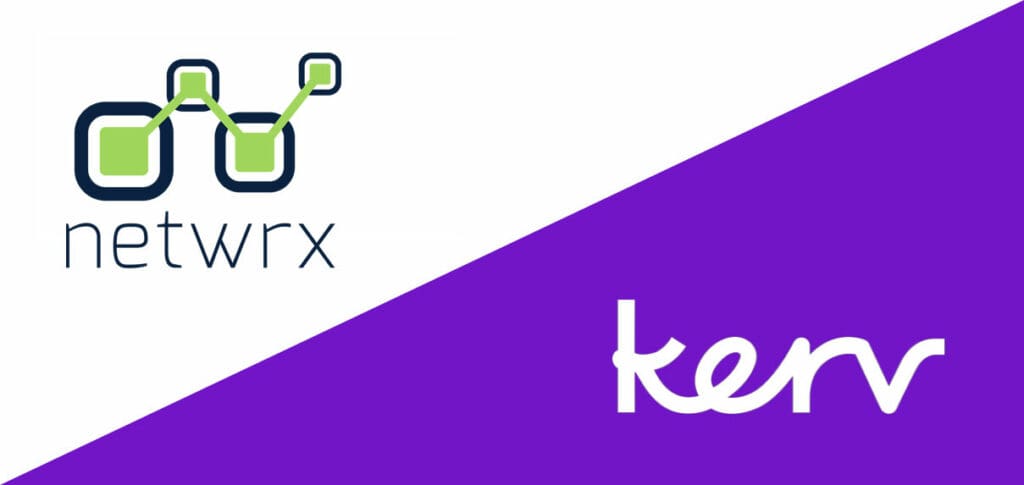
Rufus Grig
Chief Technology & Strategy Officer, Kerv Group|Kerv
Have a question?
Get in touchPublished 06/11/24 under:
After months of internal planning, the first two episodes of our newly launched podcast, Learning Kerv, have gone live to the masses! We had the pleasure of exploring the vast, wonderful and (sometimes!) wild world of Generative AI and Machine Learning with Kerv CTO, Rufus Grig, and CTO at Kerv Digital, Will Dorrington.
Let’s to delve deeper into the episodes and have a look at the most crucial points from the discussion, exploring in greater detail the views and expertise of two of our esteemed CTOs.
Do you have any burning questions following the podcast’s debut? Are there any topics you’d love to see us cover? Get in touch.
Now let’s get into it…
What is AI and ML?
Artificial Intelligence (AI) and Machine Learning (ML) are revolutionising the way we interact with technology. AI refers to the capability of machines to mimic human intelligence, performing tasks such as decision-making and pattern recognition.
ML, a subset of AI, involves training machines to learn from data, enabling them to make predictions and decisions without being explicitly programmed. This ability to learn and adapt is what makes ML essential to modern AI systems.
William Dorrington explains,
When I think of AI, or let’s break it down even further, artificial intelligence, it’s the ability of machines like computers to mimic human intelligence. This can include things like learning from experience, understanding language, solving problems, and even making decisions. Essentially, it’s about making machines think and act in a smart way like humans do.”
Applications of ML
Machine Learning is not just a theoretical concept; it has practical applications that impact our daily lives. From personalised recommendations on streaming services to the development of autonomous vehicles and advanced healthcare solutions, ML is at the forefront of technological innovation.
These applications demonstrate how ML can analyse vast amounts of data to provide valuable insights and improve efficiency across various industries.
For example, Netflix uses ML for prediction by suggesting films or shows based on your viewing history. Similarly, ML helps in membership renewals and propensity modelling by predicting the likelihood of a subscription renewal based on user interaction and historical data.
Classification is another widely recognised application, such as email spam detection in Outlook or image classification (e.g., identifying whether an image is of a hot dog or a porcupine). Clustering and anomaly detection are used to group similar data items and identify unusual patterns, which are particularly useful in banking for detecting fraudulent transactions.
Difference between Model and Algorithm
Understanding the distinction between models and algorithms is crucial for ML. An algorithm is a set of instructions designed to solve a specific problem. In contrast, a model is the result of training an algorithm on data to make predictions or decisions.
Essentially, algorithms are the tools used to create models, which are then used to interpret new data.
Labelled vs Unlabelled Data
Data is the backbone of ML, and it comes in two primary forms: labelled and unlabelled. Labelled data includes input-output pairs, where the output is known and used to train the model in supervised learning.
Unlabelled data, on the other hand, lacks this explicit output, making it suitable for unsupervised learning where the model identifies patterns and structures within the data. Both types of data are critical for training robust AI models.
William elaborates:
Labelled data is when each piece of data actually comes with the correct answer. For example, we tell the algorithm, ‘This is a hot dog, and this is a porcupine.’ Unlabelled data, however, does not have these answers. The computer has to figure it out on its own, grouping similar pieces of data and identifying outliers.”
Supervised vs Unsupervised Learning
Supervised and unsupervised learning are two fundamental approaches in ML. Supervised learning is akin to being a student with a teacher who provides the correct answers during training.
William compares it to learning how to play Monopoly with guidance from friends and family. In contrast, unsupervised learning is like observing others play without any instructions, where the computer finds patterns and relationships independently.
Training vs Inference
The journey of an ML model involves two main phases: training and inference. During training, the model learns from historical data, adjusting its parameters to minimise errors.
Once trained, the model enters the inference phase, where it applies what it has learned to make predictions on new, unseen data. This process is akin to a student learning a subject and then applying that knowledge in real-world scenarios.
William explains, “The training phase is where the computer learns from the data, improving the model. Inference is where the trained model is put to use, making predictions or decisions based on new data.”
Rufus Grig adds, “Training a model takes a long time because it involves feeding it lots of data, whereas inference is much quicker, involving the model making predictions based on individual instances.”
How AI Recognises Images, Text, and Sound
One of the most impressive capabilities of AI is its ability to recognise and process various forms of data, including images, text, and sound.
Through techniques such as convolutional neural networks (CNNs) for image recognition, natural language processing (NLP) for text analysis, and recurrent neural networks (RNNs) for sound processing, AI systems can interpret and understand complex data inputs, enabling applications like facial recognition, speech-to-text transcription, and sentiment analysis.
Everyday AI: From Magic to Mundane
Reflecting on the ubiquity of AI, Rufus Grig notes, “The magic is sort of ever-present, isn’t it? I remember when I first heard speech recognition by a computer, it seemed extraordinary. And now the first thing I say every morning is Alexa, play Radio 4. You know, I talk to machines all day, every day, and it’s completely commonplace.”
William adds, “It’s around us in everyday life everywhere. I’m a big fan of Alexa. I use it for the most basic things like Alexa, what’s the time, all the way to, okay, let’s turn the downstairs lights on, let’s turn the upstairs lights on.”
The Evolution of Machine Learning
William further elaborates on the evolution of machine learning, comparing it to traditional computing. “Instead of actually being explicitly programmed with rules, machine learning allows a computer to learn from the data that it’s reviewing. This means machine learning systems can improve and adapt over time, whereas traditional compute systems stay the same way unless we go in and reprogram it.”
He uses a relatable analogy to explain this concept: “Imagine you’re playing a new game at a village funfair, guessing how many sweets are in a jar. Initially, it might be hard, but as you see more jars, you start noticing patterns and get better at predicting. Machine learning works similarly, finding patterns in data and making predictions, even if it doesn’t understand the underlying rules like a human might.”
What Are LLMs?
Large Language Models (LLMs) are the backbone of generative AI technologies like ChatGPT and Google’s Gemini. These models are trained on vast amounts of internet data, including articles, journals, forums, and web pages. They learn patterns in natural language to generate accurate and coherent responses based on input prompts.
Key Processes:
- Tokenisation: This process breaks down text input into smaller chunks or tokens.
- Vectorisation: Converts these tokens into high-dimensional vectors (numbers) that the machine can process.
- Attention Mechanisms: Allows the AI to focus on the relevant parts of the input to generate accurate responses.
- Human Feedback: LLMs rely not only on their clever algorithms but also on human feedback. This is done through Reinforcement Learning from Human Feedback (RLHF), where human trainers guide the AI, improving its responses over time.
- Parameters and Size: Parameters are settings or weights that help the model understand and process data. For example, GPT-3 has around 180 billion parameters, while GPT-4 boasts over a trillion. However, size isn’t everything. Smaller models with millions or billions of parameters can be more efficient for specific tasks and require less computational power.
- Sustainability Concerns: Large models consume significant processing power, raising sustainability concerns. Smaller models can be more efficient, especially for targeted tasks, making them ideal for mobile devices and low-compute environments.
Building and Training ML Models
The process of building and training ML models involves several key steps. It often starts with a neural network, a system inspired by the human brain that helps the computer spot patterns. The computer is then given labelled data, which includes examples where the correct answer is known; this helps the computer learn the right answers.
During model training, the computer uses this data to adjust its approach to identifying patterns. Once trained, the model is tested with new, unseen data to evaluate its performance. If the model’s predictions are not accurate enough, it is refined and adjusted until it performs as expected.
Rufus summarises,
A neural network’s almost like the blank mind. You have some data that you understand, so you know the rules that align to that data, you feed it into the model, and then you have some data that you test that it’s performing, and then you sort of keep going again until it’s working well.”
The Importance of Data Quality
High-quality data is crucial for the success of ML models.
As Rufus points out, “It’s important that the data is good. And I guess also that test data is going to be vital in being able to do that validation because we’re putting these systems into practice.”
William agrees, emphasising that data is at the heart of machine learning: “Data is everything in tech. It’s either processing data, transforming data, adding data in a validated way, or deleting data. Everything is about the movement of data. ”
Use Cases of Generative AI
- Everyday Applications: Generative AI has quickly integrated itself into various everyday services. Tools like ChatGPT and Google’s Gemini allow users to generate text prompts for writing essays, answering questions, creating songs, jokes, or even coding. These front-facing applications provide direct interaction with AI, enhancing productivity and creativity.
- Behind the Scenes: Generative AI operates extensively behind the scenes in tools such as Microsoft Teams Premium, which automatically generates meeting summaries, and Microsoft 365 Copilot, which assists in drafting emails and documents. Even smartphone features like predictive text and auto-replies in apps like Gmail or Slack use AI to simplify everyday tasks, making life easier for everyone.
- Beyond Text: Generative AI is not limited to text. It extends its capabilities to images, videos, music, and software code creation. Tools like GitHub Copilot utilise the Codex models to assist in writing software code. While it continues to improve in areas requiring complex, empathetic creativity, such as storytelling and music composition, its progress in mathematics and scientific reasoning is remarkable, as seen with recent updates from AI models like OpenAI.
- Impact and Future: Generative AI is making waves globally, not just in the tech world. Its potential to impact industries like graphic arts, music composition, science, and law suggests it can elevate professions rather than replace them. This transformative technology wave is reshaping various fields by offering unprecedented assistance and enhancing human capabilities.
Generative AI is here to stay, revolutionising how we interact with technology and shaping the future of work and creativity. Keep an eye out for more exciting developments as this technology continues to evolve.
What’s Next in Generative AI?
Agentic AI: The next big leap in generative AI is the advent of agentic AI. Unlike reactive models that respond to user prompts, agentic AI will take initiative, anticipate needs, and work autonomously. For example, it won’t just wait for instructions to schedule a meeting but will proactively manage your calendar, reschedule appointments to avoid conflicts and handle tasks with minimal input.
Proactive and Autonomous: Agentic AI can execute tasks in both digital and physical realms autonomously. For instance, if it notices a conflict in your calendar, it will adjust meetings and appointments without being asked. This evolution will revolutionise digital assistants, transforming them into proactive entities with the ability to anticipate and solve problems independently.
What do you need to be aware of?
- Mindful Data Sharing: Be cautious about what you share with public tools like ChatGPT, as they may not adhere to strict GDPR regulations and can train on your data.
- Private Tools: Utilise tools like Microsoft Copilot within your company’s tenant, which ensures data privacy and doesn’t train on your data unless explicitly allowed.
- Verification: Always verify the information generated by AI models. They can make mistakes, and double-checking important data is essential.
- Efficient Use: Generative AI is powerful and can greatly enhance productivity and efficiency when used wisely.
Generative AI is poised to become even more integral to our daily lives, with agentic AI leading the charge. By engaging with these tools and understanding their capabilities and limitations, we can unlock new levels of efficiency and innovation.
If you are interested in the topic of Generative AI, listen to the Learning Kerv podcast and join us as we delve into the fundamentals of AI and explore its transformative potential with Rufus Grig and guests, including William Dorrington.
Stay tuned for episode 3, which will be winging its way to your ears next week!
Have a question?
"*" indicates required fields






